Moon Zero Two (1969)
Directed by: Roy Ward Baker
Written by: Frank Hardman, Gavin Lyall, Martin Davison, Michael Carreras
Starring: Adrienne Corri, Catherine Schell, James Olson, Warren Mitchell
UK
AVAILABLE ON DVD
RUNNING TIME: 97 mins
REVIEWED BY: Dr Lenera, Official HCF Critic
In the year 2021, the moon is in the process of being colonised, and this new frontier is attracting a diverse human population to lunar settlements. Space pilot Bill Kemp and his engineer Karminski make a dangerous living salvaging damaged satellites in Bill’s rundown ferry ship. Clementine Taplin asks Bill to help find her brother Wally,and he begins to do aid her, but then sinister millionaire J. J. Hubbard makes Bill an offer he can’t refuse: a brand new space ferry in return for piloting an asteroid consisting of gemstone sapphire to the dark side of the moon….
The only Hammer film to be set in the future, Moon Zero Two is a rather quaint, Western-influenced [writer/producer Michael Carreras was a great fan of Westerns which makes me wonder why Hammer never tried their hand at the genre, what with the more violent ‘spaghetti westerns’ which were popular at the time] science fiction adventure that isn’t really that good but which has a lot of charm. I’ve always found 60’s and 70’s depictions of the future interesting and amusing because the styles of those decades often tend to feed so much into what appears on screen that the resulting films, despite being supposedly set a great many years from now, are virtual time capsules. Moon Zero Two wasn’t as ”far out” as I expected, but many first time viewers may still wonder when Austin Powers is going to show up. It’s actually a little dull at first, but there’s a reasonable amount of action in the second half, while the special effects are a mixed bag but sometimes rather good considering that this was a fairly cheap movie from 1969, though, as was often the case when Hammer strayed out of their comfort zone, one wonders how the studio honchos thought that the meagre budget would be enough for a futuristic adventure set on the Moon with lots of hardware.
Gavin Lyall, Frank Hardman and Martin Davison wrote a story outline in 1967, and Hammer were interested, but Hammer’s usual distributors and co-financiers 2oth Century Fox weren’t. Luckily when Warner Bros-Seven Arts took over Fox’s role, they found the project appealing. Jimmy Sangster was initially to write and produce, but couldn’t get the script right and in the end handed it plus the job of producing over to Michael Carreras who did both duties. The project still took some time to get off the ground at a time where several other proposed Hammer non-horror films were cancalled, but the forthcoming Apollo mission kept interest. The film was shot at both Elstree and Bray. Director Roy Ward Baker, probably chosen because he’d recently done Quatermass And The Pit, wanted an aircraft hanger for the space scenes as he rightly felt that they would be better achieved if allotted more space, but was refused. Carreras had high hopes for the film and even begun work on a sequel entitled Disaster In Space as well as considering a TV series. Unusually for Hammer, even a soundtrack album was planned. However, the film was a major flop, even when released in the US on a double bill with When Dinosaurs Ruled The Earth. This may not have happened it if had come out before Neil Armstrong made his giant leap for mankind, which caused many to have the opinion that nothing was as exciting as the real thing, or before 2001: A Space Odyssey which suddenly made every other space movie look unconvincing due to the advancement it made in special effects.
And yet – well, I’m not really sure what I expected – but much of the space stuff in Moon Zero Two really doesn’t look bad, such as the opening satellite recovery sequence which is virtually silent [which is just as it should be, some effort was made to be realistic on a few occasions in this film] and is pretty suspenseful. It follows a rather wacky title sequence, over which a horribly catchy [it’s still in my mind] swinging number is sung by Julie Driscoll [no, me neither], where cartoons humorously depict the space race, replete with an American and a Russian astronaut constantly coming to blows, and the colonisation of the moon. The film takes place in 2021, and its hero was the first person to land on Mars. How I love it when science fiction films think that mankind would have achieved a lot more in the future than it actually has done. Anyway, Bill Kemp is apparently the best pilot around, but can no longer explore space because of budget cuts and spends his time either salvaging broken satellites in a ship which is on its last legs, or hanging around in the local saloon ordering cocktails with names like Moon Flower and Rocket Fuel. Oh, and he’s also a bit of a lady’s man, enjoying liaisons with safety officer Elisabeth Murphy who ought to be shutting his operation down because his ship is so unsafe, and a pink-haired ‘hostess’ played by – yes it’s her! – Monty Python foil Carol Cleveland! I just found it amazing that it takes this guy the whole film to get with the main female character of the piece, Clementine Taplin, who’s looking for her brother and who first finds Bill in a shower area which, she’s told, “is reserved for space personnel only”.
Little happens for a while, though one can still enjoy things like almost every woman wearing funky coloured wigs and bulky false eyelashes, everything being paid for by card [fancy that], or the dance act that’s always performing go-go dancing in the saloon, a saloon where even Michael Ripper is a patron. Certain drinks are really expensive though – a shot of scotch is $35 so it’s no wonder that, when in the main villian’s lair, Bill immediately pours himself a glass without waiting for it to be offered to him. Of course the monocled J. J. Hubbard doesn’t initially seem that bad, offering our hero a job that’ll make him rich, but we immediately guess that he may be up to no good. He wants to divert an asteroid made of sapphire, a substance which can be used to build much improved rocket engine thermal insulators, onto the dark side of the moon. Could this have something to do with Clementine’s missing brother, who may have found something there? The storyline isn’t badly worked out really and and I like how the baddies here are money-grabbers and monolithic corporations, and how the race for space is now purely economic. Exploration will only happen if somebody can profit. Some thought has been put into some of this, even though the overall tone is a bit tongue-in-cheek with a bar brawl taking place in zero gravity and odd lines like: “What did you call this pompous punch? Tastes more like Tijuana Brass polish” [a reference to a ’60s band]. Hubbard has an assistant who keeps fiddling with his projections of photographs from Earth. “I’ve never been to Switzerland” she says, to which he replies: “The only things worth seeing are the banks”. And I wonder if the Pan Am lunar express trying to jump the cue for re-entry is a reference to 2001.
The second half does provide a few tense moments, even a gunfight where the villains die to discordant musical accompaniment. The two main set pieces involving the asteroid really are quite well achieved considering the budget. The model work is decent and the rear projection better than on some ’80s films that I’ve seen. On the other hand, while we do a few nice views of the colonies with different abodes, the first revelation of Moon City being quite impressive as the camera slowly tracks right across a quite realistic lunar landscape to reveal the place, there are some very poor and unconvincing surface views too, and the model space buggy looks ridiculous when inter-cut with a life sized model which probably couldn’t even move. A couple of explosions look awful too. It’s obvious though that Hammer’s top special effects man Les Bowie was doing what he could with the money and the resources he was given, and he still achieved some good work along the way. And, though one laugh at things like the differently coloured space suits, Carreras pays attention to things like pressure, and the spacecraft interiors certainly look reasonable.
James Olson doesn’t quite have the charisma to pull of his character, but still has a slight laid back charm. Catherine Schell and Adrienne Corri are the two leading ladies and fare reasonably well, while Bernard Bresslaw is as enjoyable as you would expect in the role of a fight-loving but very dumb heavy. The very groovy score by Don Ellis at first seems a bit anachronistic and isn’t always great at evoking drama, but it adds lot of pace to scenes which wouldn’t otherwise have had much, and is even downright experimental in parts. There are some very good danceable pieces which may well have caught on a little if they’d released the soundtrack. Both stupid and intelligent at times though not quite as barmy as you might expect, Moon Zero Two cannot really be counted a success, but it remains a fitfully engaging oddity in Hammer’s filmography, and certainly shows an interesting new direction that the studio could have gone down if had it done well.
Rating: 










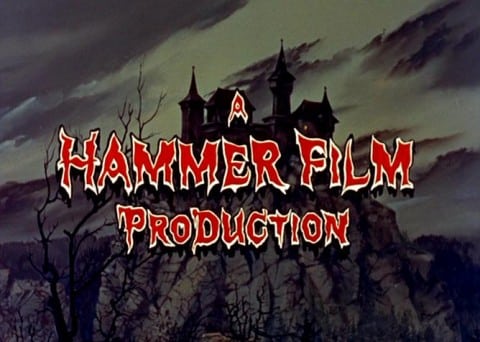
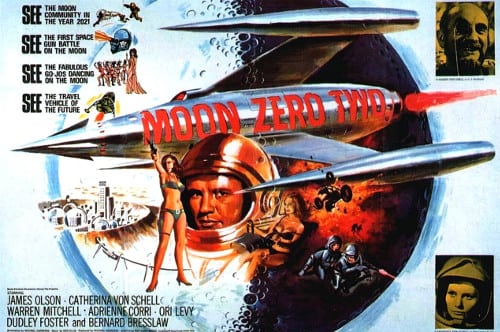
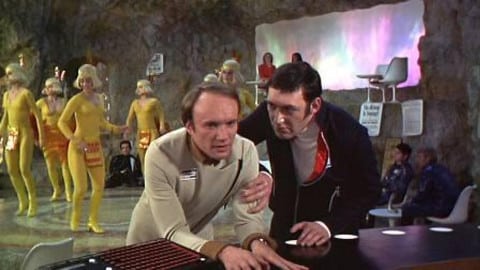
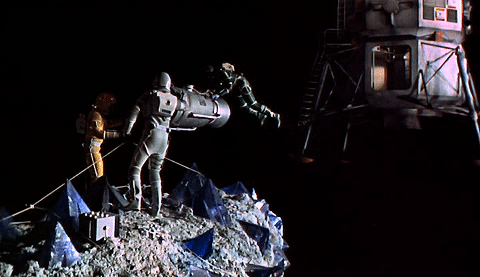

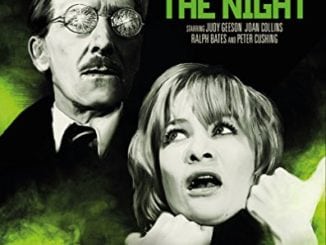
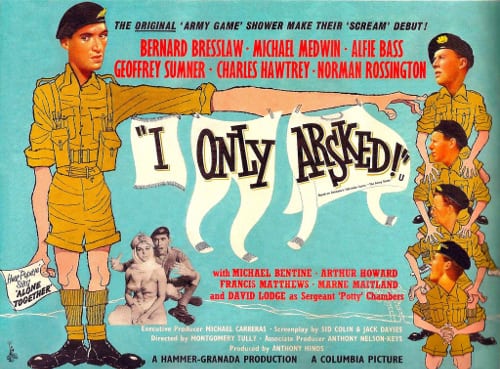
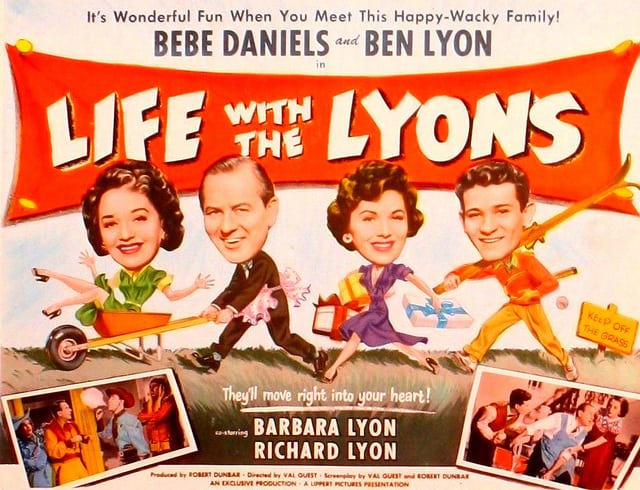
Be the first to comment